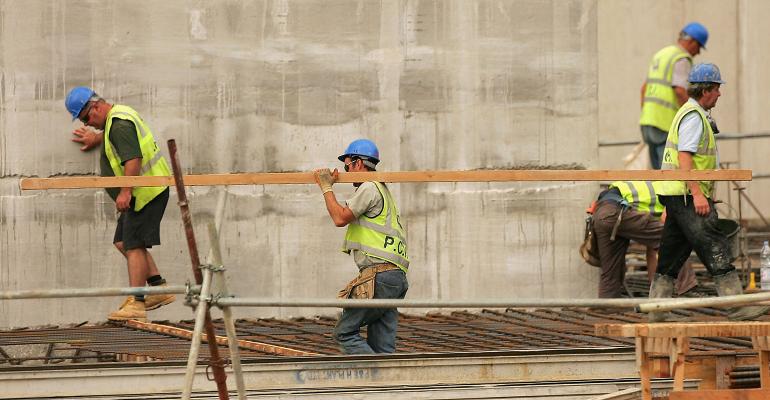(The opinions expressed here are those of the author, a columnist for Reuters.)
By Mark Miller
CHICAGO, March 9 (Reuters) - Karen Friedman has been traveling the country speaking at meetings of retired union members - and they are angry. What riles them is the prospect of deep cuts in promised pension benefits, and they are hoping for relief from President Donald Trump.
"Many of them were Trump voters," said Friedman, executive vice president and policy director at the Pension Rights Center (PRC), a nonprofit advocacy group. “These are the folks the president campaigned for, and he made promises to protect the working class.”
The threatened benefit cuts, which could impact 1.5 million retirees and workers, stem from deep financial problems affecting some multiemployer pension plans - traditional defined benefit plans jointly funded by groups of employers - typically in industries like construction, trucking, mining and food retailing.
More than 10 million U.S. workers and retirees are covered by 1,400 of these plans - many of them in Trump-supporting U.S. Rust Belt states like Ohio and Michigan. But as many as 200 are severely underfunded - the result of stock market crashes in 2001 and 2008-2009, and industrial decline that led to consolidation and declining employment. The problems threaten individual workers’ pensions, but also could bring down the fail-safe backstop that insures the pensions of many millions more.
The U.S. Congress passed legislation in 2014 that aimed to head off an implosion of multiemployer plans. The Multiemployer Pension Reform Act of 2014 (MPRA) allows troubled plans to seek federal government permission to make deep cuts to the future pensions of workers - and even for current retirees - if they can show that cuts would prolong the life of the plan.
In theory, that would stave off plan failures - and help avert a complete draining of the multiemployer insurance reserves of the Pension Benefit Guaranty Corp (PBGC), the federally sponsored agency that backstops private-sector defined benefit pension plans.
That was the theory, anyway. In practice, MPRA pension reform plans have met with stiff political resistance and skepticism from decisionmakers in government.
CENTRAL STATES POSTER CHILD
The poster child for the multiemployer plan problems has been the Teamsters’ Central States Pension Fund, which covers 400,000 participants and is a financial basket case. Last May, the U.S. Treasury rejected an application by the fund to cut benefits, saying the plan sponsors had not met certain MPRA hurdles.
Treasury - which plays the key role under MPRA of reviewing these applications - said the plan failed to demonstrate that the cuts were properly estimated to avoid plan insolvency, and that it did not distribute reductions equitably or explain the actions to plan participants in an understandable way.
This was a major test case for MPRA. Central States is on a path to insolvency within 10 years unless a solution is found. The proposed cuts average 20 percent, but some of the longest-tenured plan participants would suffer much larger reductions - as high as 70 percent, according to PRC. The sharpest cuts would have been borne by so-called orphans - retirees from companies that have exited the plan. Older and disabled retirees would have been exempted.
The government has denied applications to make cuts from three other plans, according to PRC, and several other plans are under review. But in December, the first plan approval was granted to the troubled Iron Workers Local 17 pension fund.
In February, about half of the plan’s 2,000 participants started to receive reduced pensions; in most cases, the cuts range from 10 percent to 30 percent - but they are as large as 60 percent in a few cases.
Under MPRA, cuts must still provide participants with at least 10 percent more than they would receive if the plan went belly-up and PBGC took over benefit payments. (Union members must vote to OK the cuts, but low turnout favors approval, since nonvoting members are counted as "yes" votes.)
Still, the proposed Central States cuts generated huge controversy among retirees, who have been showing up at rallies, legislator town hall meetings and testifying in Congress to express their anger.
Their emotions are justified. It never makes sense to break pension promises to people who already are retired and have no ability to adjust. Trump's new Treasury secretary, Steven Mnuchin, said as much during his U.S. Senate confirmation hearing in January. “People who have worked very long periods of time and have built up a pension deserve to get their pension,” he said. “That is very important.”
But he went on to say: “We have to be careful that on the other extreme we don't have a bailout of the entire pension industry and bankrupt the guarantee fund.”
Mnuchin is correct on both points. So - what now?
PRC and others are working on legislative proposals and hope to convene a meeting soon of stakeholders to develop a consensus approach. Any new plan will still spread the pain, unfortunately. Proposals that have been floated include higher PBGC premiums for plan sponsors, offset by tax breaks; asking current retirees to make small membership-style payments into a fund to help bolster plans; others have suggested a targeted energy tax.
Some aggrieved retirees have suggested taxing financial institutions that helped cause the 2008 economic meltdown in order to force them to help solve the problem. That is an idea Mnuchin - who previously worked at Goldman Sachs Group Inc - should consider as he ponders the options. But I am not counting on it.
(Editing by Matthew Lewis)






